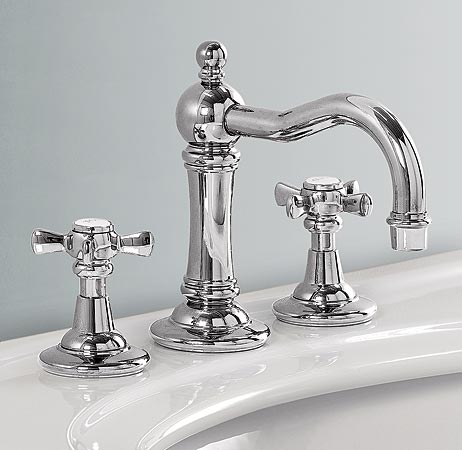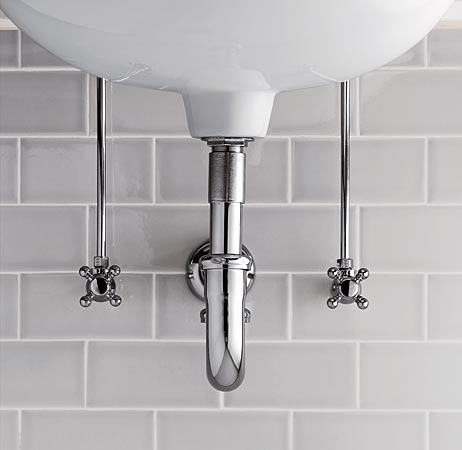
A: Vintage fixtures are beautiful—the white is creamier, the shapes more voluptuous—and there’s something soul-satisfying about resurrecting a lovely old piece and putting it back into service. But the road to rehabilitation is not always easy.
Let’s start with the sink. A vintage porcelain sink will be either vitreous china (also called porcelain) or cast iron with a porcelain finish (also called enamel). If it’s china it can’t be easily or dependably refinished, according to Tabitha Long, owner of Island Girl Salvage (160 Kelly St., Elk Grove Village, 847-593-2433; islandgirlsalvage.com). So if you see one you like in an alley or salvage shop, inspect it carefully for cracks and chips before lugging it home. But porcelain-finished cast-iron sinks can be beautifully refinished, Long says—“They’ll look brand new and you’ll come out ahead because new vintage-style sinks are priced so high.” Vitreous china tubs are pretty rare, she points out, and they don’t keep water warm as long as cast-iron/porcelain. Island Girl Salvage has vintage sinks and tubs in stock.
The secret about toilets is that in some ways old is better than new because old toilet tanks hold more water and therefore flush more vigorously than new ones. Water-conservation regulations passed in 1994 set a new standard of 1.6 gallons per flush; toilets built earlier used from 3.5 to 7 gallons per flush. Water conservation is crucial, to be sure, but a newer toilet often needs several flushes to empty. (Dual-flush toilets, used since the 1980s in other parts of the world, are finally becoming more common in this country. They address the problem with a flush option of more gallons of water for solid waste.)
But another reason old toilets are better, says Jan Seymour, who owns Jan’s Antiques (225 N. Racine Ave., 312-563-0275; jansantiques.net), is aesthetic—they have lovelier shapes. Jan’s has a large selection of vintage sinks, tubs, and toilets, and plumbing fixtures. Other good sources for vintage fixtures are Salvage One (1840 W. Hubbard St., 312-733-0098; salvageone.com) and Urban Remains (410 N. Paulina St., 312-523-4660; urbanremainschicago.com). For an online source, try deabath.com.

Experts disagree on whether to use old or new plumbing hardware with a vintage fixture. “We try to save and use all old stuff. We try the old one first. We try to retrofit. We machine parts and custom assemble them,” says Adam Chamlin, manager of The Faucet Shoppe (3865 N. Elston Ave., 773-478-3890; chicagofaucetshoppe.com). The Faucet Shoppe stocks a huge selection of old and new faucets, as well as replacement parts.
Urban Remains owner Eric Nordstrom agrees. “I hate germs and hair and nastiness, but I scrub the hell out of old faucets because old stuff is better than new,” he says. “The details are crisper.”
But old faucets may be more trouble than they’re worth, says Mike Deckman, Internet marketing manager for Vintage Tub & Bath (877-868-1369; vintagetub.com). In the old days, sinks were manufactured with proprietary parts—particular faucets only fit particular sinks. If you find a sink with its original faucet, you can spend a lot of time and money having the faucet rehabbed—cleaned, repaired, and replated—only to find, once installed, that it leaks. And the only way to know it leaks is to do all that work. Exceptions to that rule are pieces made by Chicago Faucet, which has been making faucets the same way since 1911 and still has replacement parts for some pretty old faucets.
High-quality new, vintage-style faucet sets are available from The Faucet Shoppe, Community Home Supply (3924 N. Lincoln Ave., 773-281-7010; 2850 N. Pulaski Rd., 773-202-3600; communityhomesupply.com), and many other suppliers.



